Located between Samarkand and Khiva, Bukhara is one of the most historic cities in Uzbekistan and one of the oldest continuously inhabited places in the world. With more than 2,000 years of history, it was once a major stop on the Silk Road, known for its Islamic architecture, scholarly heritage, and strong Persian cultural influence.
Growing up in Iran, I had always heard about Bukhara. It was often mentioned in poetry, stories, and schoolbooks. The city has long been considered a centre of learning and spirituality, and even today, many locals still speak a dialect of Farsi.
We spent three nights in Bukhara, exploring its mosques, madrasahs, colourful markets, and quiet spiritual corners.
In this post, I’ll share the best things to do and see, where to stay, what to eat, and some practical tips to help you plan your visit. You can also watch my full travel guide on YouTube.
Before we dive into the list, make sure to subscribe to my mailing list so you never miss out on my latest travel guides and tips!
Download my free packing checklist
How to Get to Bukhara
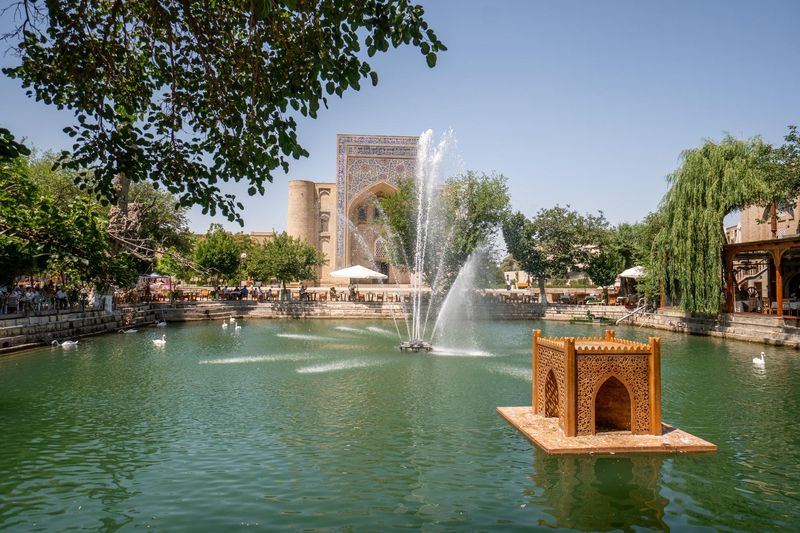
By Train: The easiest and most popular way is by train. The Afrosiyob high-speed train connects Samarkand and Bukhara in just 1 hour and 45 minutes, but tickets sell out fast, so book early. You can book it here.
If it’s full, the Sharq trains are a slower alternative (up to 3.5 hours), but they’re older and don’t have air conditioning, so not ideal in the summer.
By Car or Private Tour: Hiring a driver gives you more flexibility, and you can stop at hidden gems along the way.
We travelled from Khiva to Bukhara on a private tour that took over 10 hours but included some ancient desert fortresses, which were well worth the detour.
By Flight: There are flights from Tashkent, but no direct flights from Samarkand, so the train or car is usually the better choice.
Where to Stay in Bukhara
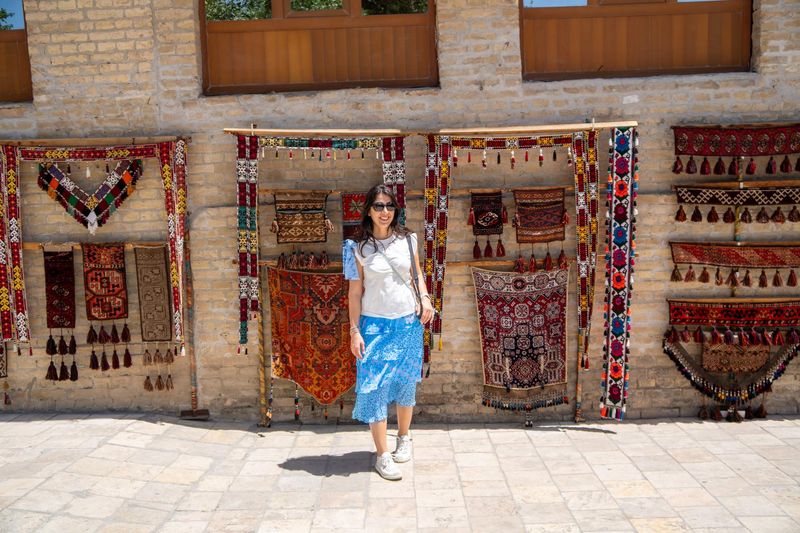
When visiting Bukhara, I highly recommend staying inside or near the old city. Most of the main attractions are within walking distance.
We stayed at a guesthouse called Silver Terrace Boutique Hotel, just a short walk from Lyabi Hauz Square. The rooms were decorated in a traditional paintings and local touches that made it feel warm and authentic. Breakfast was included, and the location was perfect for wandering around the old town on foot.
If you’re looking for other options, there are plenty of restored caravanserais and family-run guesthouses that offer a cosy atmosphere. Some highly rated places include:
Komil Boutique Hotel: A beautifully restored 19th-century house with antique furniture, just a few minutes from the old town.
Amulet Hotel: Set in a former madrasah, this small hotel offers a unique stay with traditional architecture and lovely staff.
Basilic Boutique Hotel: A stylish and centrally located option with beautifully designed rooms and excellent reviews from travellers looking for a comfortable stay with modern touches.
Wherever you choose to stay, I recommend booking early, especially in spring or autumn, which are the most popular times to visit Bukhara.
Best Things to Do in Bukhara
Bukhara’s old city feels like an open-air museum, but it’s very much alive — with buzzing courtyards, peaceful mosques, and centuries-old buildings that still serve a purpose. Here are the best things to do and see:
Stroll Around Lyabi Hauz Square
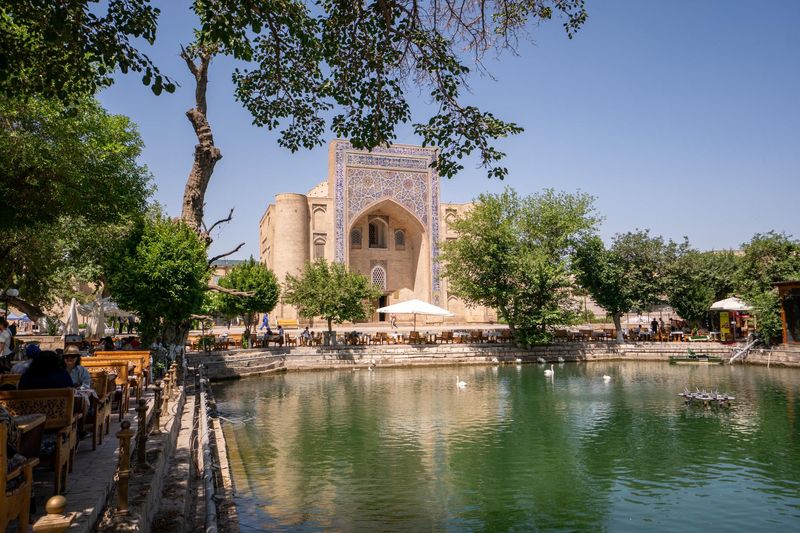
Lyabi Hauz is the heart of the old town and a perfect place to start your visit. The name means “by the pond” in Persian, and the small lake here is surrounded by historic buildings, cafes, and open-air restaurants. It’s where locals gather, especially in the evenings when the heat fades and live music fills the square.
Personal note: I loved sitting by the water with a cold carrot juice, a nostalgic drink that reminded me of my childhood in Iran. The energy here changes throughout the day, and it's the best spot for people-watching or just taking a break.
Explore the Historical Buildings Around Lyabi Hauz
Lyabi Hauz isn’t just a beautiful square. It’s surrounded by three important historical buildings, each with its own story:
Nadir Divan-Begi Madrasah
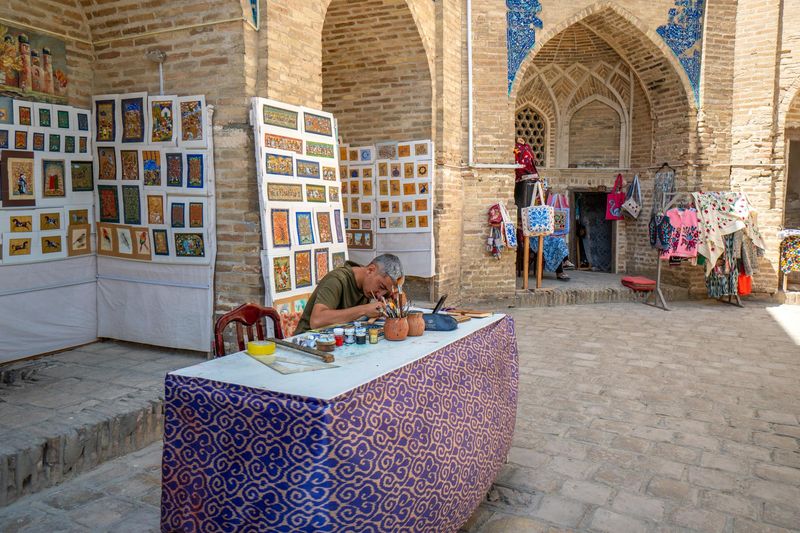
This 17th-century madrasah is famous for breaking architectural norms. Unlike most Islamic structures, its façade features mythical birds, something rarely seen in traditional Islamic art. It was originally planned as a caravanserai but was later turned into a madrasah. Today, it often hosts craft stalls or cultural shows. You can visit it free of charge.
Nadir Divan-Begi Khanaka
Opposite the madrasah, this khanaka was once a spiritual retreat and resting place for Sufi dervishes, who followed the Sufi path of Islam. Sufi dervishes are known for their devotion, humility, and spiritual practices.
The building still holds a peaceful energy, and its domed structure stands out in the square.
Kukeldash Madrasah
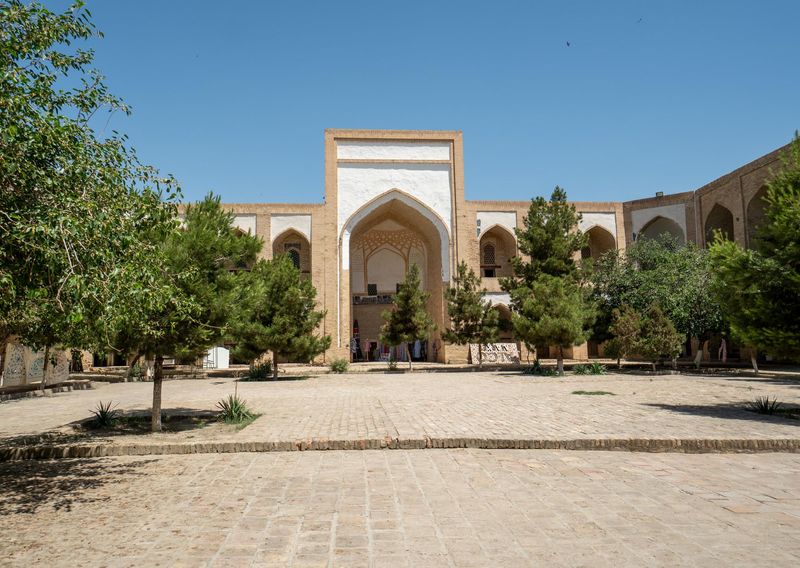
Built in the 16th century, this is the oldest of the three and one of the largest madrasahs in Central Asia. It was once an active centre of Islamic learning and now houses local art and souvenir shops inside. Even if you’re not going inside, it's worth admiring the architecture from the square.
Together, these three buildings frame the Lyabi Hauz pond and make it one of the most photogenic and historic corners of Bukhara.
Visit the Kalon Mosque
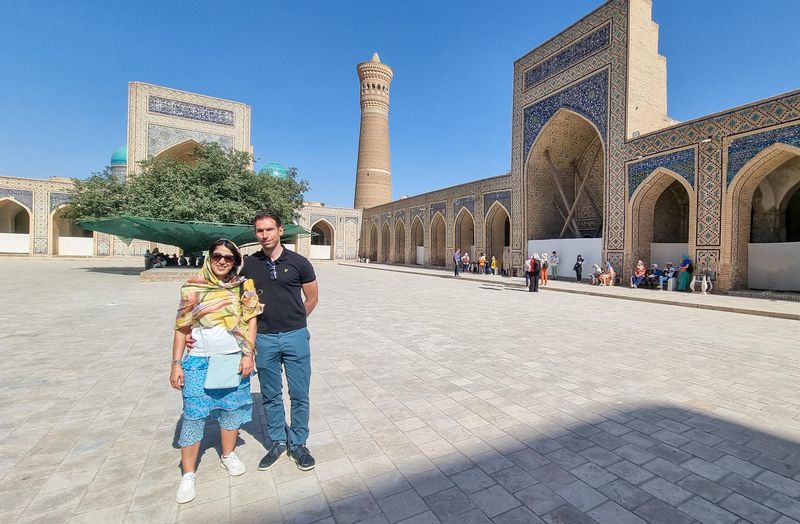
No visit to Bukhara is complete without seeing the Kalon Mosque and Minaret, one of the city’s most iconic landmarks.
The word “Kalon” means “grand” in Persian, and this complex lives up to its name.
The Kalon Mosque is one of the largest in Central Asia, with space for up to 10,000 worshippers. The vast courtyard, marble columns, and turquoise domes create a peaceful yet awe-inspiring atmosphere.
We actually joined a local Historic Centre Guided Sightseeing Tour to better understand the history and symbolism behind the mosque and its architecture, and I highly recommend doing the same.
Visit the Kalon Minaret
Next to the mosque, you’ll find the Kalon Minaret, built in 1127. At nearly 46 metres tall, it was once the highest structure in Central Asia, and it still dominates Bukhara’s skyline today.
Originally used to call people to prayer, the minaret also served as a watchtower and, more grimly, as a place of punishment.
In certain periods of history, criminals were reportedly thrown from the top as a method of public execution, earning it the chilling nickname Tower of Death.
Despite its dark past, the minaret is a masterpiece of Islamic architecture. Its elegant brickwork, geometric patterns, and perfect proportions are so impressive that, according to legend, Genghis Khan spared it while destroying much of the city, simply because he admired its beauty.
Step Inside the Ark of Bukhara
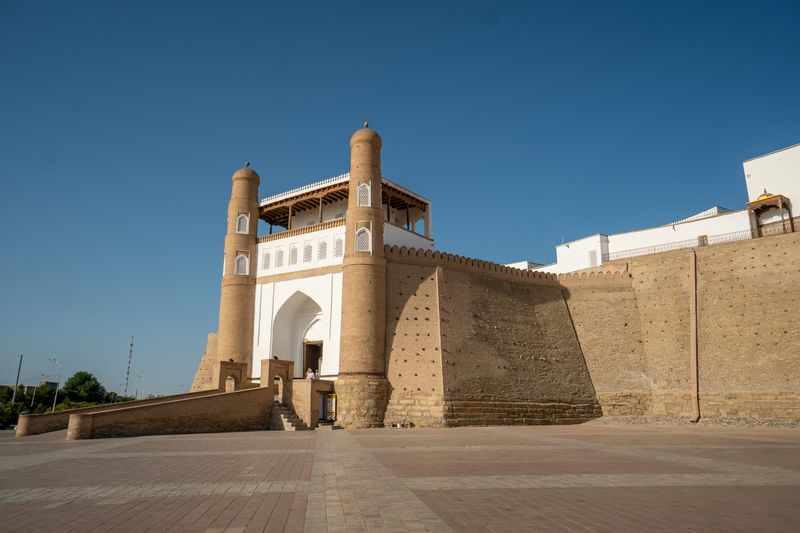
Just a short walk from the Kalon complex, you’ll find the Ark of Bukhara, an ancient fortress that was once the seat of power for the emirs of Bukhara.
The Ark isn’t just a single building; it’s a walled royal town that dates back over 1,500 years. For centuries, it served as a palace, government headquarters, and military stronghold, essentially a city within a city. Inside, you can visit several restored rooms and museums that offer a glimpse into Bukhara’s past, from royal court life to military history.
Although much of the original complex was damaged during the Russian invasion in the 1920s, the remaining structures still evoke the power and scale of what once stood here. The grand entrance, with its twin towers and sloping ramp, is one of the most iconic views in Bukhara.
Tip: There’s very little shade inside the Ark, so it’s best to visit early in the morning or near sunset, when it’s cooler and the light is perfect for photos.
A Quick Stop at Chor Minor
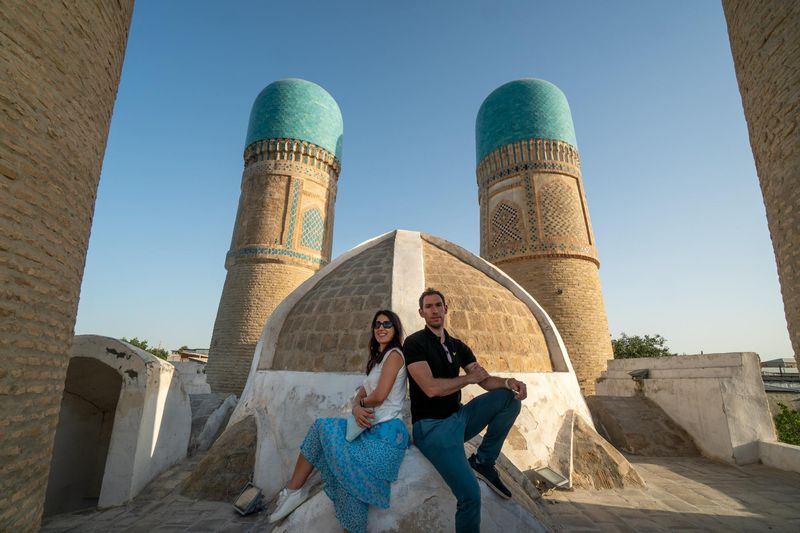
Tucked away in a quiet neighbourhood of Bukhara, Chor Minor is a charming little structure that looks nothing like the grand madrasahs or mosques in the old town, and that’s exactly why it stands out.
The name Chor Minor means Four Minarets. That’s exactly what you’ll see, a small room topped with four distinctive towers, each with its own unique design.
Despite its appearance, Chor Minor was never a mosque. It was originally the entrance to a larger madrasah complex that no longer exists.
You can actually climb up inside for a small fee, but there’s not much to see apart from the view from the top. Still, it’s a fun and quick stop, and very photogenic.
Stroll Through Bukhara’s Markets and Carpet Shops
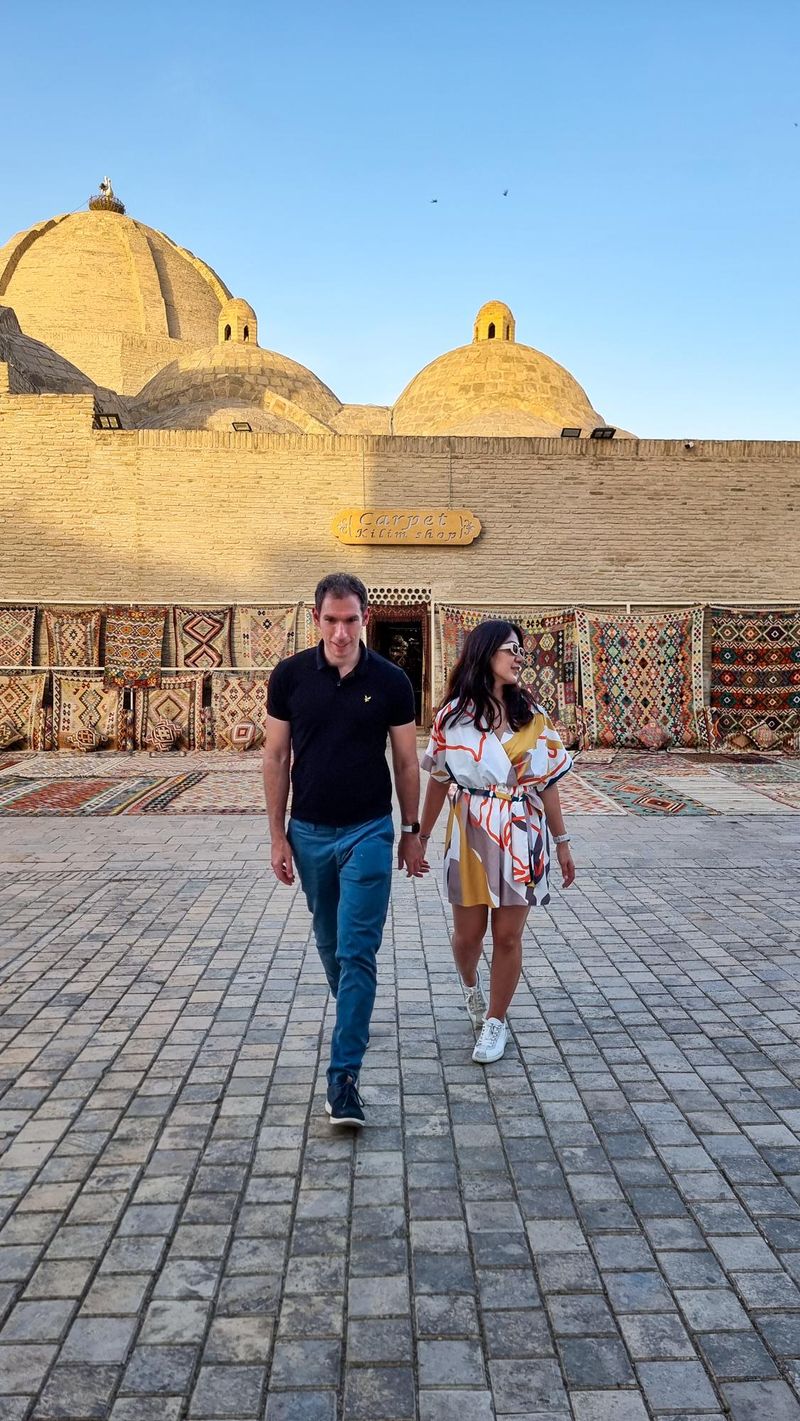
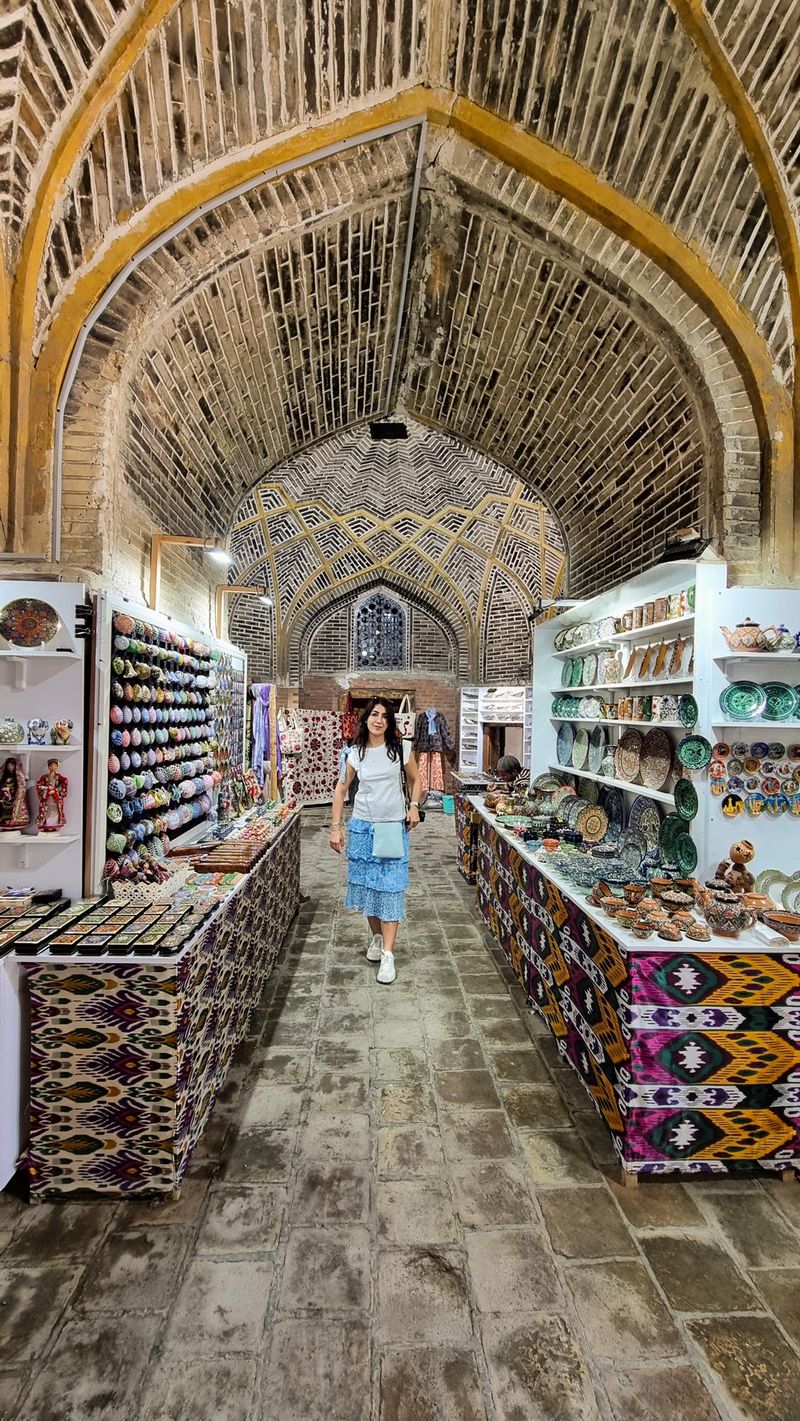
One of the best ways to soak in the atmosphere of Bukhara is simply by wandering through its old streets and markets. We spent a lot of time just strolling around, no set agenda, and always ended up finding something interesting.
You’ll come across traditional domed bazaars, small artisan shops, spice stalls, and carpet workshops, many of which are tucked under the old trading domes. These markets are a great place to browse local handicrafts like embroidery, ceramics, and miniature paintings, or to just stop and chat with the friendly shopkeepers.
Unlike in many touristy places, shopping here feels very relaxed. The vendors are never pushy. You’re free to browse and take your time. I even ended up buying a small silk carpet. And if you don’t want to carry one home, many shops will ship directly to your door, anywhere in the world.
If you want to learn more about Bukhara’s rich trade history and get a deeper insight into the old town, you can also join a walking tour that covers the markets, domes, and caravanserais. We recommend the Best of Bukhara Walking Tour, which includes stops at the main historical sites as well.
Step Inside a Historic Bathhouse
While wandering through Bukhara’s old town, we came across Hammam Bozori Kord, one of the oldest surviving bathhouses in the city. It’s believed to be over 600 years old and was once an important place for locals to wash, relax, and socialise.
Today, it’s no longer an active hammam. It’s preserved as a historical building open to the public, and when we visited, there was no entrance fee. You can walk through the different stone chambers and imagine what it might have been like centuries ago.
With modern homes now equipped with bathrooms, these traditional bathhouses are no longer part of daily life. But stepping inside still gives you a fascinating glimpse into the social and cultural life of old Bukhara.
Admire the Samanid Mausoleum
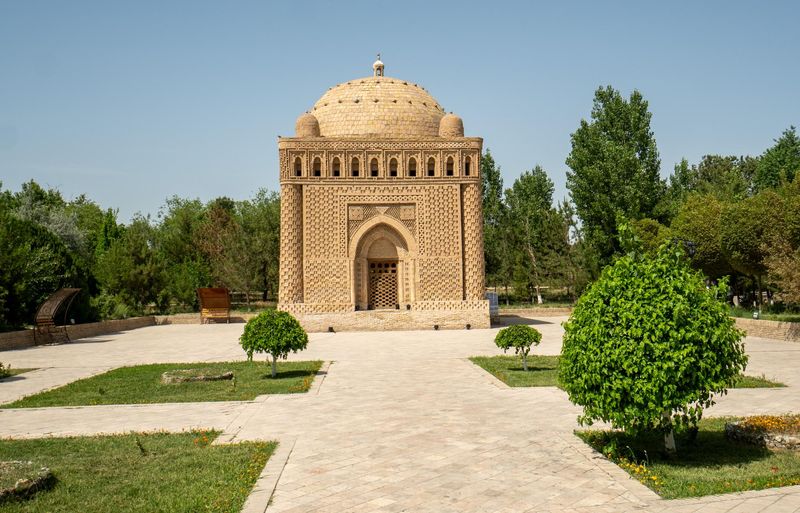
Located in a small park just outside the old city and a short walk from the Ark, the Samanid Mausoleum is the oldest Islamic building in Bukhara, dating back to the 9th century. It was built as the tomb of Ismail Samani, the founder of the Samanid dynasty.
What makes it special is the intricate brickwork, no tiles, no cement, just perfectly arranged baked bricks. According to local legend, the bricks were even made with camel milk to make them stronger.
It’s a peaceful spot and definitely worth the short walk.
Visit Abdulaziz Khan Madrasah and Ulugh Beg Madrasah
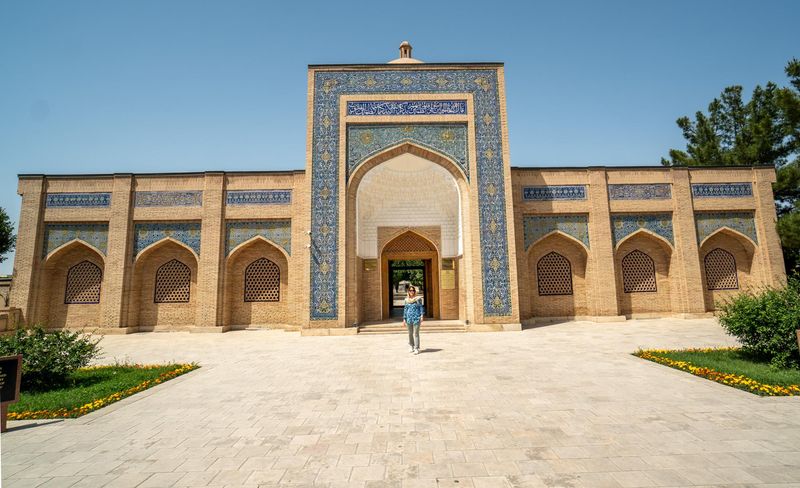
During its golden era, Bukhara was home to over 300 mosques and more than 100 madrasahs. It was one of the leading centres of Islamic education in the region. Some of these madrasahs are still standing today, including Ulugh Beg Madrasah and Abdulaziz Khan Madrasah, which face each other near the Kalon complex.
The Ulugh Beg Madrasah, built in the 15th century by the famous Timurid ruler and astronomer, reflects the earlier style of architecture, more modest and symmetrical.
In contrast, the Abdulaziz Khan Madrasah, built in the 17th century, is more decorative, with colourful tiles, carved stucco, and some sections that remain unfinished.
Stop for a Break at the Silk Road Teahouse
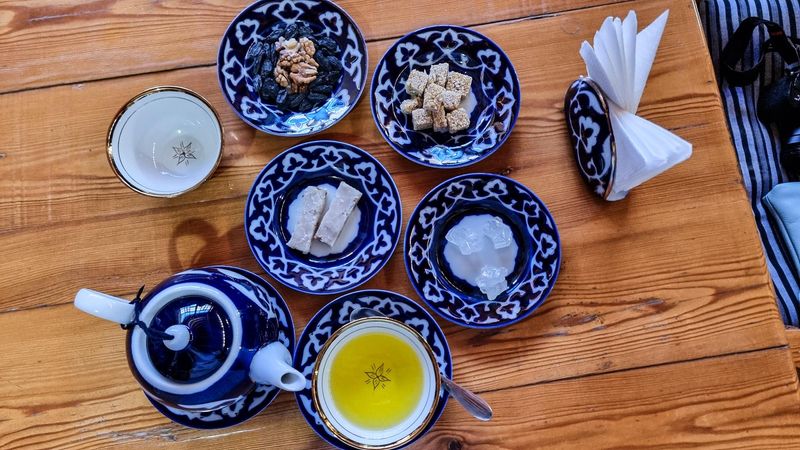
Tea is a big part of Uzbek culture; it’s not just a drink, it’s a symbol of hospitality and tradition. And one of the best places to experience it in Bukhara is the Silk Road Teahouse.
I have to confess, I’m not usually a tea drinker. But even if you're like me, it’s worth trying their herbal or saffron tea here. It’s more than just a beverage. It’s an experience. The teahouse has a unique, calming vibe, with shelves filled with colourful spices and teas from across Central Asia.
Whether you’re into tea or not, it’s a great place to take a quiet break and soak up the atmosphere of the old town.
Take a trip to the Naqshband Complex

Just a short drive from the old city, the Naqshband Complex is one of Bukhara’s most spiritual and peaceful places, and yet, it’s often missed by tourists.
This site is the final resting place of Bahauddin Naqshband, the founder of the Naqshbandi Sufi order, which became one of the most influential Sufi movements in the Islamic world. Many people still come here on pilgrimage, and you can feel the spiritual energy the moment you arrive.
If you have time, I do recommend visiting. It’s quiet, serene, and surrounded by beautiful gardens and courtyards. You don’t need a lot of time here, but it offers a different side of Bukhara, one that's more introspective and deeply connected to the city's spiritual heritage.
Try Bukhara’s Famous Plov
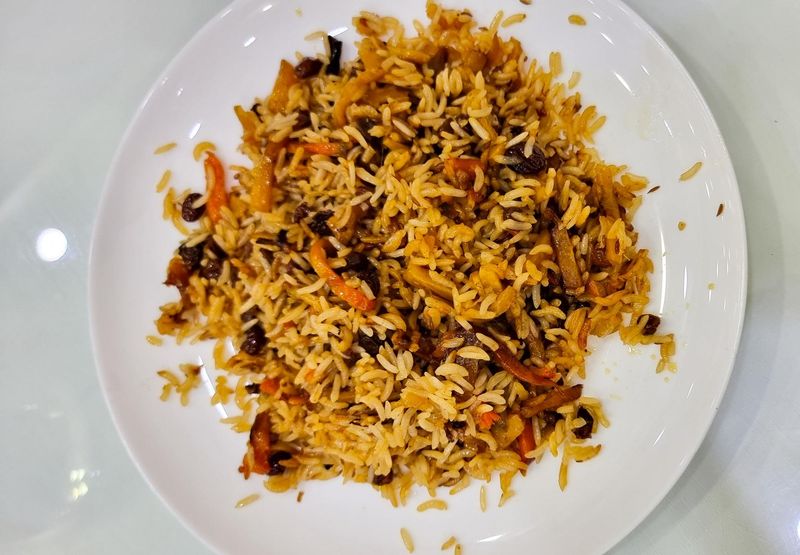
Plov, a rice dish, is one of the most iconic dishes in Uzbekistan, and every region puts its own spin on it.
In Bukhara, plov is often made with yellow carrots, lamb or beef, chickpeas, and sweet touches like raisins, all cooked together with rice in a giant cauldron called a kazan. The result is a hearty, flavourful dish traditionally served at lunchtime.
You’ll find plov served all over Uzbekistan, but there’s a bit of friendly rivalry between cities. In Samarkand, they’ll swear theirs is better. In Bukhara, they’re just as proud of their version.
We tried both, and honestly, we couldn’t pick a favourite. Each one had its own twist, and both were absolutely delicious. So if you’re visiting these two cities make sure to try plov in each and decide for yourself.
If you want to try it for yourself, head to The Plov, one of the best places in Bukhara to taste this traditional dish.
Take Day Trips from Bukhara
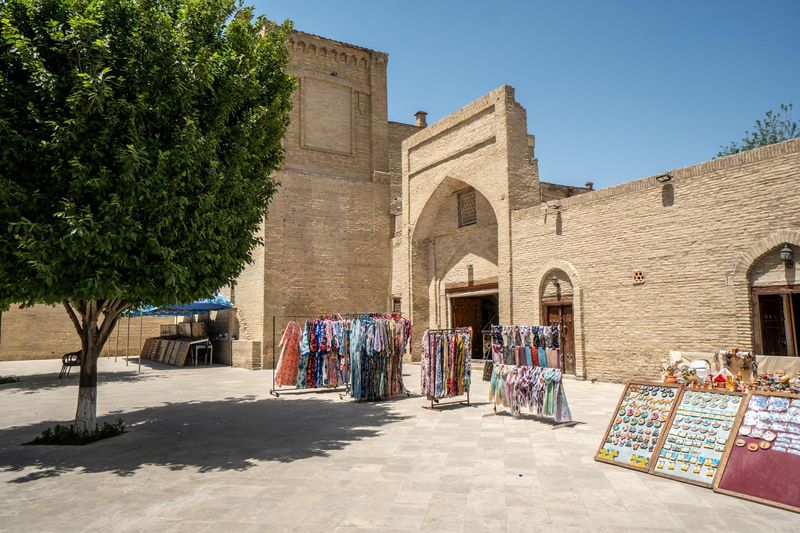
If you have more time in Bukhara, there are some interesting day trips and overnight tours worth considering. These are good options if you want to explore the countryside, visit more historical sites, or experience a bit of adventure.
Explore the Bukhara Countryside
On this day tour, you’ll visit the summer palace of Bukhara’s last Emir, the Naqshbandi Sufi Complex, and the Samanid Mausoleum. It’s a good introduction to the region’s history beyond the old city, and includes a local lunch.
Explore the Bukhara Countryside with Local Lunch Experience
Kyzylkum Desert Overnight Tour
This tour takes you into the Kyzylkum Desert. You’ll sleep near ancient fortresses and experience local hospitality in a desert setting.
Book the Kyzylkum Desert tour from Bukhara
Tour to Lake Aydarkul and Yurt Camp
We took this tour ourselves and spent a couple of nights in a traditional yurt and went swimming in Lake Aydarkul. It also includes hiking in the Nuratau Mountains and is ideal if you want to disconnect and explore somewhere remote.
Book 3-Day Yurt Stay, Hiking & Lake Aydarkul
Final Thoughts
Bukhara surprised me in the best way. It’s one of those rare places where history isn’t just something you read about. You feel it in the streets, the architecture, and the energy of the city. Whether you’re into history, culture, or simply wandering through beautiful places, Bukhara is a destination that leaves a lasting impression.
If you're planning a trip to Uzbekistan, I highly recommend spending a few days here. And if you want to see more, don’t forget to check out my full Bukhara travel video on YouTube for extra tips and visuals.

